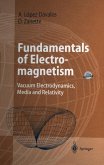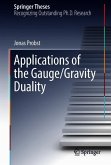Throughout my whole career including student time I have had a feeling that leaning and teaching electromagnetism, especially macroscopic Maxwell equations (M-eqs) is dif?cult. In order to make a good use of these equations, it seemed necessary to be able to use certain empirical knowledges and model-dependent concepts, rather than pure logics. Many of my friends, colleagues and the physicists I have met on various occasions have expressed similar impressions. This is not the case with microscopic M-eqs and quantum mechanics, which do not make us feel reluctant to teach, probably because of the clear logical structure. What makes us hesitate to teach is probably because we have to explain what we ourselves do not completely understand. Logic is an essential element in physics, as well as in mathematics, so that it does not matter for physicists to experience dif?culties at the initial phase, as far as the logical structure is clear. As the we- known principles of physics say, "a good theory should be logically consistent and explain relevant experiments". Our feeling about macroscopic M-eqs may be related with some incompleteness of their logical structure.
From the reviews:
"The book under review is a specialized but at the same time a very interesting exposition on the Maxwell equations in matter or, in other words, on the response functions of matter to electromagnetic fields. It certainly is of interest to physicists working in condensed matter physics and optics, but also to scientists who want to learn more about some fundamental aspects of electrodynamics. Since the author applies his theory to metamaterials, the book could also catch the attention of scientists specializing in material science." (Marek Nowakowski, Mathematical Reviews, Issue 2012 a)
"The book under review is a specialized but at the same time a very interesting exposition on the Maxwell equations in matter or, in other words, on the response functions of matter to electromagnetic fields. It certainly is of interest to physicists working in condensed matter physics and optics, but also to scientists who want to learn more about some fundamental aspects of electrodynamics. Since the author applies his theory to metamaterials, the book could also catch the attention of scientists specializing in material science." (Marek Nowakowski, Mathematical Reviews, Issue 2012 a)








